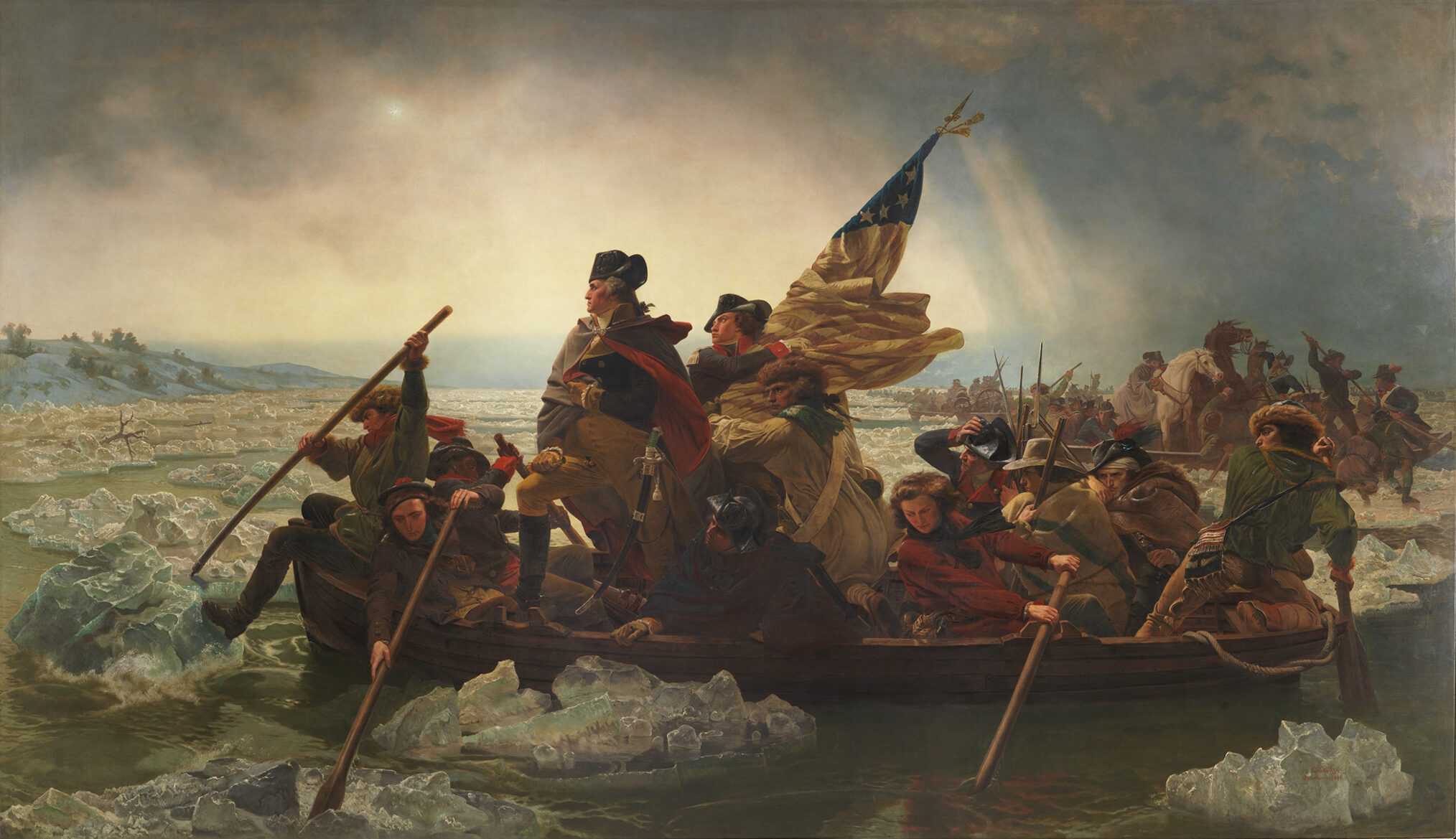Chapter 2
Revolutionary War
From their earliest forced arrival in colonial North America, enslaved Africans had rebelled. Crispus Attucks, a 47-year-old sailor and fugitive enslaved man, became the first casualty in the Boston Massacre, and his act of defiance marked the beginning of the march towards revolution. By April 1775, Massachusetts militiamen clashed with British troops, launching the Revolutionary War.
The conflict touched everyone—white, Black, enslaved, or free. With much of colonial society built on human bondage, some felt that there was a paradox at the heart of the American Revolution. Abigail Adams, a white Patriot, wrote: “It allways appeard a most iniquitious Scheme to me—fight ourselves for what we are daily robbing and plundering from those who have as good a right to freedom as we have.” For Africans, the Revolution was a battle for freedom from slavery.
Africans, at 20% of the colonial population, could tip the scales of war and therefore could not be ignored. The British and Colonial armies, initially reluctant, sought the advantage of recruiting able-bodied enslaved African men to support their cause. Africans aligned with whichever side offered the better promise of freedom. Black Patriot Boyrereau Brinch remembered: “Thus was I, a slave for five years, fighting for liberty.”
A Revolutionary Fight for Freedom
First News of the Battle of Lexington
For Africans in the colonies, the American Revolution represented a paradox and an opportunity. Both Patriots and Loyalists recruited enslaved men, yet both continued to condone slavery. Some slave owners even sent enslaved men to fight in their place. But the war also gave black soldiers a chance to escape to freedom. Enslaved Africans fought for their liberty, and their zeal helped to shape the Revolutionary era, inspiring uprisings across the Atlantic world, including the Haitian Revolution.
Tens of thousands of people of African descent fought in the American Revolution, but their battle for freedom had begun long before the war. From their earliest forced migration in North America, enslaved Africans had rebelled. They watched, with personal interest as mounting tensions between British troops and local seaman exploded onto the streets of Boston. By April 1775, Massachusetts militia men clashed with British troops in the Battle of Lexington, launching the Revolutionary War.
Lemuel Haynes, Patriot Soldier
Militia Man Lemuel Haynes
At age 21 Lemuel Haynes, an indentured servant, enlisted in the Massachusetts militia. He fought with the minutemen in the Battle of Lexington on April 19, 1775, and later became the first ordained black minister of a Protestant faith.

Liberty & Freedom, an innate principle . . . unmovably placed in the human species . . . an African has equal . . . right to his Liberty in common with Englishmen.
Lemuel Haynes, 1776
Conditional Promises of Freedom
British Governor of the Province of the Colony of Virginia
As the war raged on, British Governor of the Province of the Colony of Virginia, Lord Dunmore’s promise of freedom to enslaved Africans who fought for the British prompted approximately 300 men to escape enslavement and join the British Royal Ethiopian Regiment. The promise of freedom for service had one caveat, enslaved Africans sent in to battle by Loyalist enslavers were returned to enslavement when the war ended.
Colonel Tye: A Rank of Respect
Fugitive Slave Ad for Titus Cornelius
Serving with the British Royal Ethiopian Regiment, Colonel Tye (Titus Cornelius) terrified Patriots in New Jersey. He was never officially an officer but led guerilla raids and captured many prisoners.
The Presence of a Black Prince
Washington Crossing the Delaware
Prince Whipple is featured in this painting of Washington crossing the Delaware. Born to a wealthy family in Africa and sent to North America to be educated, Whipple was kidnapped at sea and sold into slavery. He participated in Washington’s surprise attack on the British in New Jersey. Whipple received his freedom after the war.
Mary Perth: Preaching Freedom
Mary Perth Silhouette
Mary Perth was a literate Methodist and an enslaved woman. At night, she often preached and promoted freedom to other blacks who gathered at the edge of the Dismal Swamp. Perth and her family escaped from John Willoughby of Norfolk, Virginia, and joined the British near Portsmouth. At least 1,000 other runaways joined the British on their journey to New York.

The negro can take the field instead of his master; and, therefore, no regiment is to be seen in which there are not negroes in abundance: and among them there are able-bodied, strong, and brave fellows.
Hessian Officer, 1777
The Southern Campaign & the Battle of Kings Mountain
By early 1780, the British shifted their attention toward the South. They took advantage of the large number of Loyalists in the region and increased the size of the British Army. The Continental Army stationed in Charleston surrendered, and the British secured the city.
In October of 1780, Colonists from the backcountry were enticed to Patriot service with the offer of “one prime slave . . . and two hundred acres of land.” Many became wealthy as a result. Meanwhile, white and black Patriot soldiers fought in interracial regiments, including at King’s Mountain, the site of a major Patriot victory. Essius Bowman, an African American militiaman from Virginia, is credited with taking down the British commander.
Cowpens: A Much-needed Patriot Victory
Battle of Cowpens
An American victory at the Battle of Cowpens, South Carolina, convinced the Patriots that the British southern campaign could be halted.[1] The young black man featured in this image is credited by Gen. Daniel Marshall with saving the life of Col. William Washington, a relative of George Washington’s, during the battle.
Securing Independence: Continuing the Fight for Freedom
James Armistead Lafayette Commendation for Service
The Battle of Yorktown was pivotal to American Independence. James Armistead, enslaved in Virginia, served as a Patriot soldier. He spied on the British for General Lafayette of the Continental Army. enslaved man and Patriot spy, leaked misinformation to the British, risking his life so that America could clinch a victory at Yorktown. His successful efforts helped secure the British surrender. Despite his brave service to the Patriot cause, Lafayette’s personal fight for freedom continued beyond the nation’s victory. In 1784 Revolutionary War hero James Armistead petitioned the Virginia General Assembly for his freedom from slavery. He won his freedom two years later.

[P]eace was restored between America and Great Britain, which diffused universal joy among all parties, except us . . .
Boston King, 1784
